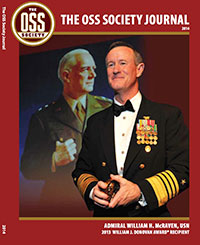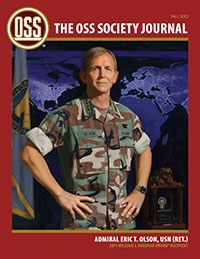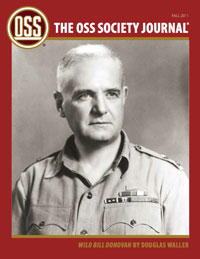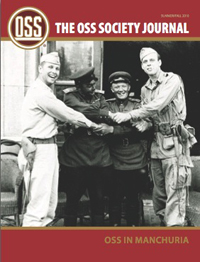Endgame, 1945: The Missing Final Chapter of World War II
February 2008 Author:Dan Pinck
The time-frame of Mr. Stafford’s history is roughly three months centered on the formal end of the war in Europe. He notes that the war continued after Germany’s surrender. Some notable events at that time, as well as events before the war are viewed through the eyes of individuals who lived through them as prisoners, reporters, soldiers, intelligence agents and relief workers in Germany, Poland, Russia, Italy and France and in other nations. The individuals he mentions are presented with a pointillist touch that captures a vivid, I-was-there, personal element in his history. They include Fey von Hassell, the daughter of a conspirator of the failed attempt to kill Hitler. She spent the war in many concentration camps. Robert Ellis, a member of the Tenth Mountain Division who fought as an infantryman in the Appennines; Bryan Samain, who fought as a commando from Normandy to the Baltic Sea and who served also as an intelligence operative; Geoffrey Cox, a frontline, British intelligence officer in Italy; Leonard Linton, who was a paratrooper with the 82nd Airborne Division; Geoffrey Cox, who fought with the New Zealand Second Division in Italy; Robert Reid, a BBC war correspondent who provided some of the most informative and depressing public accounts of Nazi behavior; Francesca Wilson, an Englishwoman who was a relief worker at a displaced persons camp in Bavaria and who visited several concentration camps at the end of the war; and others.
As an UNNRA representative, Ms Wilson went to Fohrenwald, built originally as a model Nazi workers village in Bavaria, where her job was to supervise the schools for eight hundred children whose languages included Estonian, Hungarian, Lithuanian, Serb, Polish and German. She found one school, headed by an Estonian, “a woman with a genius for handling small children.” The schools included Holocaust survivors. She traveled to Munich to find books for her school. She opened a mathematics textbook, and she read: “Germany has 100,000 epileptics and 250,000 mental defectives. It costs 2 .50 marks a day to keep each one of them. How many babies could go to nursery school at a cost of 1 mark daily for the same sum?” Nazification infected everything in Germany. Ms Wilson had to search widely for appropriate books for children.
Fey von Hassell was a political prisoner, a Sippenhafte, whose fate was to be shuffled with thousands of other political prisoners from concentration camp to concentration camp. The evacuations became death marches. The Third Reich used a variety of ways to kill upwards of a quarter of a million of these people; they burned some in barns; they machine-gunned others; they shot them when they stopped to tie their shoelaces – if they weren’t barefoot; they starved them; many froze to death; guards shot the exhausted. The Gestapo made no distinction between German prisoners and those from other nations.
These savage marches happened a few days, weeks and months before the end of the war, and after it. Ms. von Hassell’s last camp was Dachau. She and other political prisoners had a grand tour of concentration camps throughout the war. She survived.
Inevitably and properly, Mr. Stafford gives us a guidebook, if you will, to life and death in German concentration camps. Even though most of us will be depressed by increasing our knowledge of some of them, we will be alarmed by the depth of Nazi depravities. Concentration camps were not a wartime invention. Heinrich Himmler, on March 21, 1933, just two months after Hitler came to power, announced that Dachau had been selected as the location of a “detention camp for the enemies of National Socialism. Early on, its first inmates were Jehovah’s Witnesses, homosexuals, clergymen, and gypsies. Nazis began stocking Jews there after Kristallnacht in 1938. Once the war started, many other groups, including dissident Polish priests, dissident Wehrmacht officers, and anti-German émigrés captured in Paris, Prague and Amsterdam, were imprisoned. (About fifty thousand Dutch collaborators were given prison sentences after the war and more than one hundred and fifty were condemned to death, and only forty were executed.)
Robert Reid’s BBC reports were far-ranging and incisive. He covered battles and knew many of the Allied military leaders, including General Patton. Reid was smart and fearless. As the war neared its end and Nazis were trying to cover their tails, he concentrated on concentration camps. And David Stafford concentrates on him and his reportage.
I’ll observe that Mr. Reid’s wartime reports – and there are many of them in this book – are far superior to Edward R. Morrow’s. Let Mr. Stafford introduce Mr.Reid: “Victory brought jubilation to thousands, but for other victims of Hitler’s Third Reich, liberation dawned amid death and despair. And Reid was determined that in the flush of victory this story should not be lost. It offered a somber and sobering counterpoint to the otherwise benign scene he had been reporting recently from the lush Bavarian countryside.”
And now Mr. Reid: “There is a trail of death one hundred and twenty-five miles long across Germany – not the death of soldiers killed in combat but the murder of those luckless inmates of the concentration camps of Buchenwald and Flossenburg who were forced by their Nazi jailers to take to the road when the Americans approached both camps.” Roughly twenty-five hundred out of five thousand prisoners from Buchenwald had been killed by the time they arrived at Flossenburg concentration camp near the Czech border. A large number of prisoners had been hanged in front of other prisoners at Flossenburg. By the site of the gallows, there was a decorated Christmas tree. Similar bestialities occurred at most of the other camps. Need I say more?
After I finished reading Endgame, 1945 I made a walkthrough of it with my coach of history, Edward Hallett Carr, to ascertain my high opinion of Mr. Stafford’s book. On all counts, Mr. Carr helps to confirm my respect for this book. “Study the historian before you begin to study the facts.” “History cannot be written unless the historian can achieve some kind of contact with the mind of those about whom he is writing.” “What is history? It is a continuous process between the historian and his facts, an unending dialogue between the present and the past.” Based on these guideposts of Mr. Carr, I have no doubt that Mr. Stafford has written an outstanding book and that his previous books reinforced his capabilities to write this one. It ranks with historian John Lukacs’s The Last European War: September 1939-December 1941.
Formerly the director of the Canadian Institute of International Affairs and an Adjunct Professor of History at the University of Toronto, Stafford is now the project director at the Center for the Study of the Two World Wars at the University of Edinburgh. Among his previous books are Camp X: OSS, “Intrepid,” and the Allies’ North American Training Camp for Secret Agents, 1941-1945; Britain and European Resistance 1940-45; Ten Days to D-Day; and Secret Agent: The True Story of the Special Operations Executive.
As an UNNRA representative, Ms Wilson went to Fohrenwald, built originally as a model Nazi workers village in Bavaria, where her job was to supervise the schools for eight hundred children whose languages included Estonian, Hungarian, Lithuanian, Serb, Polish and German. She found one school, headed by an Estonian, “a woman with a genius for handling small children.” The schools included Holocaust survivors. She traveled to Munich to find books for her school. She opened a mathematics textbook, and she read: “Germany has 100,000 epileptics and 250,000 mental defectives. It costs 2 .50 marks a day to keep each one of them. How many babies could go to nursery school at a cost of 1 mark daily for the same sum?” Nazification infected everything in Germany. Ms Wilson had to search widely for appropriate books for children.
Fey von Hassell was a political prisoner, a Sippenhafte, whose fate was to be shuffled with thousands of other political prisoners from concentration camp to concentration camp. The evacuations became death marches. The Third Reich used a variety of ways to kill upwards of a quarter of a million of these people; they burned some in barns; they machine-gunned others; they shot them when they stopped to tie their shoelaces – if they weren’t barefoot; they starved them; many froze to death; guards shot the exhausted. The Gestapo made no distinction between German prisoners and those from other nations.
These savage marches happened a few days, weeks and months before the end of the war, and after it. Ms. von Hassell’s last camp was Dachau. She and other political prisoners had a grand tour of concentration camps throughout the war. She survived.
Inevitably and properly, Mr. Stafford gives us a guidebook, if you will, to life and death in German concentration camps. Even though most of us will be depressed by increasing our knowledge of some of them, we will be alarmed by the depth of Nazi depravities. Concentration camps were not a wartime invention. Heinrich Himmler, on March 21, 1933, just two months after Hitler came to power, announced that Dachau had been selected as the location of a “detention camp for the enemies of National Socialism. Early on, its first inmates were Jehovah’s Witnesses, homosexuals, clergymen, and gypsies. Nazis began stocking Jews there after Kristallnacht in 1938. Once the war started, many other groups, including dissident Polish priests, dissident Wehrmacht officers, and anti-German émigrés captured in Paris, Prague and Amsterdam, were imprisoned. (About fifty thousand Dutch collaborators were given prison sentences after the war and more than one hundred and fifty were condemned to death, and only forty were executed.)
Robert Reid’s BBC reports were far-ranging and incisive. He covered battles and knew many of the Allied military leaders, including General Patton. Reid was smart and fearless. As the war neared its end and Nazis were trying to cover their tails, he concentrated on concentration camps. And David Stafford concentrates on him and his reportage.
I’ll observe that Mr. Reid’s wartime reports – and there are many of them in this book – are far superior to Edward R. Morrow’s. Let Mr. Stafford introduce Mr.Reid: “Victory brought jubilation to thousands, but for other victims of Hitler’s Third Reich, liberation dawned amid death and despair. And Reid was determined that in the flush of victory this story should not be lost. It offered a somber and sobering counterpoint to the otherwise benign scene he had been reporting recently from the lush Bavarian countryside.”
And now Mr. Reid: “There is a trail of death one hundred and twenty-five miles long across Germany – not the death of soldiers killed in combat but the murder of those luckless inmates of the concentration camps of Buchenwald and Flossenburg who were forced by their Nazi jailers to take to the road when the Americans approached both camps.” Roughly twenty-five hundred out of five thousand prisoners from Buchenwald had been killed by the time they arrived at Flossenburg concentration camp near the Czech border. A large number of prisoners had been hanged in front of other prisoners at Flossenburg. By the site of the gallows, there was a decorated Christmas tree. Similar bestialities occurred at most of the other camps. Need I say more?
After I finished reading Endgame, 1945 I made a walkthrough of it with my coach of history, Edward Hallett Carr, to ascertain my high opinion of Mr. Stafford’s book. On all counts, Mr. Carr helps to confirm my respect for this book. “Study the historian before you begin to study the facts.” “History cannot be written unless the historian can achieve some kind of contact with the mind of those about whom he is writing.” “What is history? It is a continuous process between the historian and his facts, an unending dialogue between the present and the past.” Based on these guideposts of Mr. Carr, I have no doubt that Mr. Stafford has written an outstanding book and that his previous books reinforced his capabilities to write this one. It ranks with historian John Lukacs’s The Last European War: September 1939-December 1941.
Formerly the director of the Canadian Institute of International Affairs and an Adjunct Professor of History at the University of Toronto, Stafford is now the project director at the Center for the Study of the Two World Wars at the University of Edinburgh. Among his previous books are Camp X: OSS, “Intrepid,” and the Allies’ North American Training Camp for Secret Agents, 1941-1945; Britain and European Resistance 1940-45; Ten Days to D-Day; and Secret Agent: The True Story of the Special Operations Executive.







